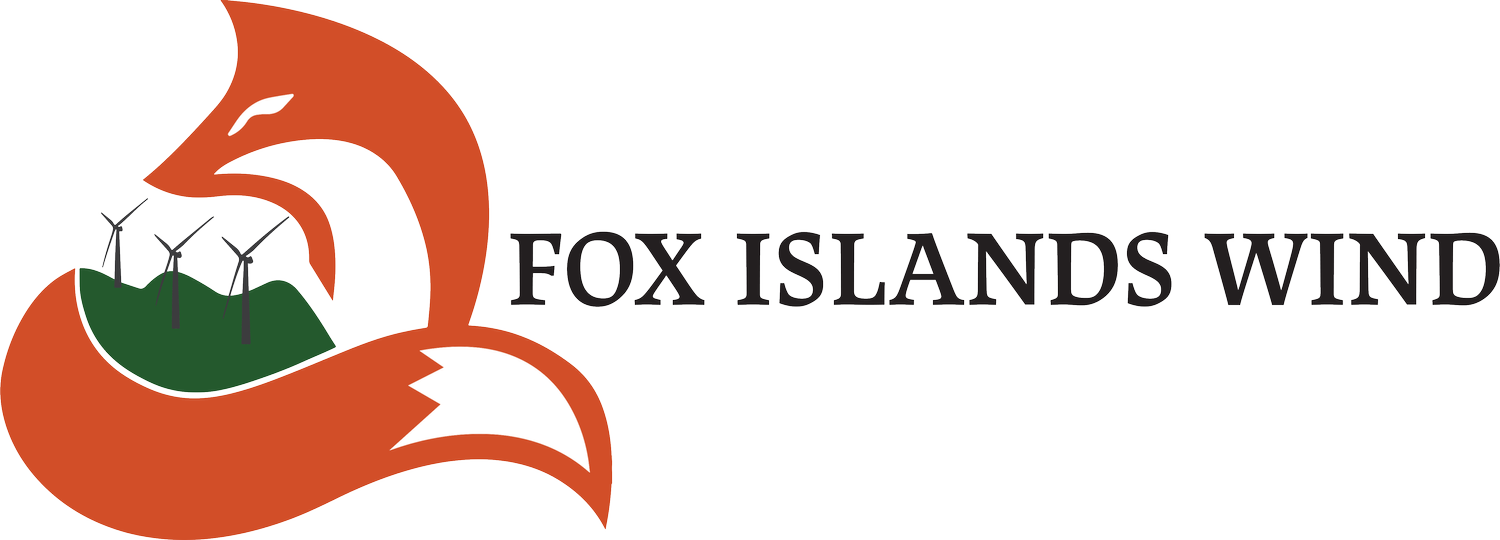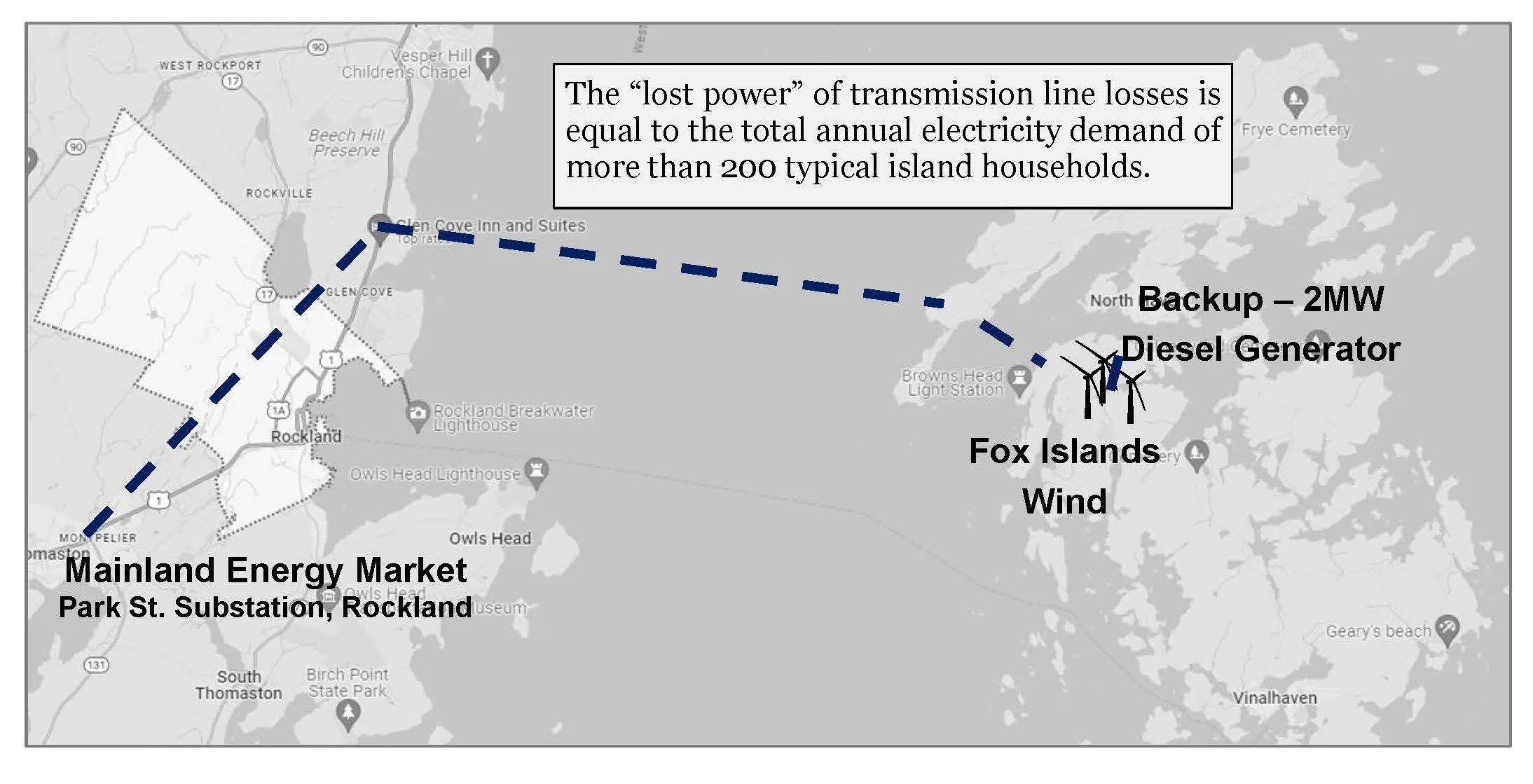The Impact of Line Losses
When FIEC has to buy electricity from the mainland to meet demand, it is sent through its 11-mile underwater cable from Glen Cove to North Haven and then to Vinalhaven for distribution to customers.
When this occurs, energy is lost during delivery over transmission lines due to electrical resistance in the wires. This is called “line loss” and is unavoidable.
Historically, FIEC has lost about 8% of the energy purchased from the mainland market due to line losses. This lost energy must still be paid for by FEIC and included in the energy costs for our customers.
In contrast, energy generated by Fox Islands Wind is delivered straight to FIEC’s substation on Vinalhaven with very little, if any, line loss.
If FIEC cannot use FIW energy (for example, late at night when power demand is low but the wind is blowing strongly), FIEC has to sell the extra power to the ISO-NE market, losing 8% of the energy sent over the submarine cable to the mainland.
FIEC has reduced line losses in the last five years by replacing old transformers, rebuilding cables, and trimming vegetation. FIEC’s new metering system has also reduced line losses by about 1% in 2024.
If we could generate and store more energy on the islands to meet more of FIEC’s energy demand and thus avoid line losses from mainland power, we could increase the reliability and affordability of our electric system.

